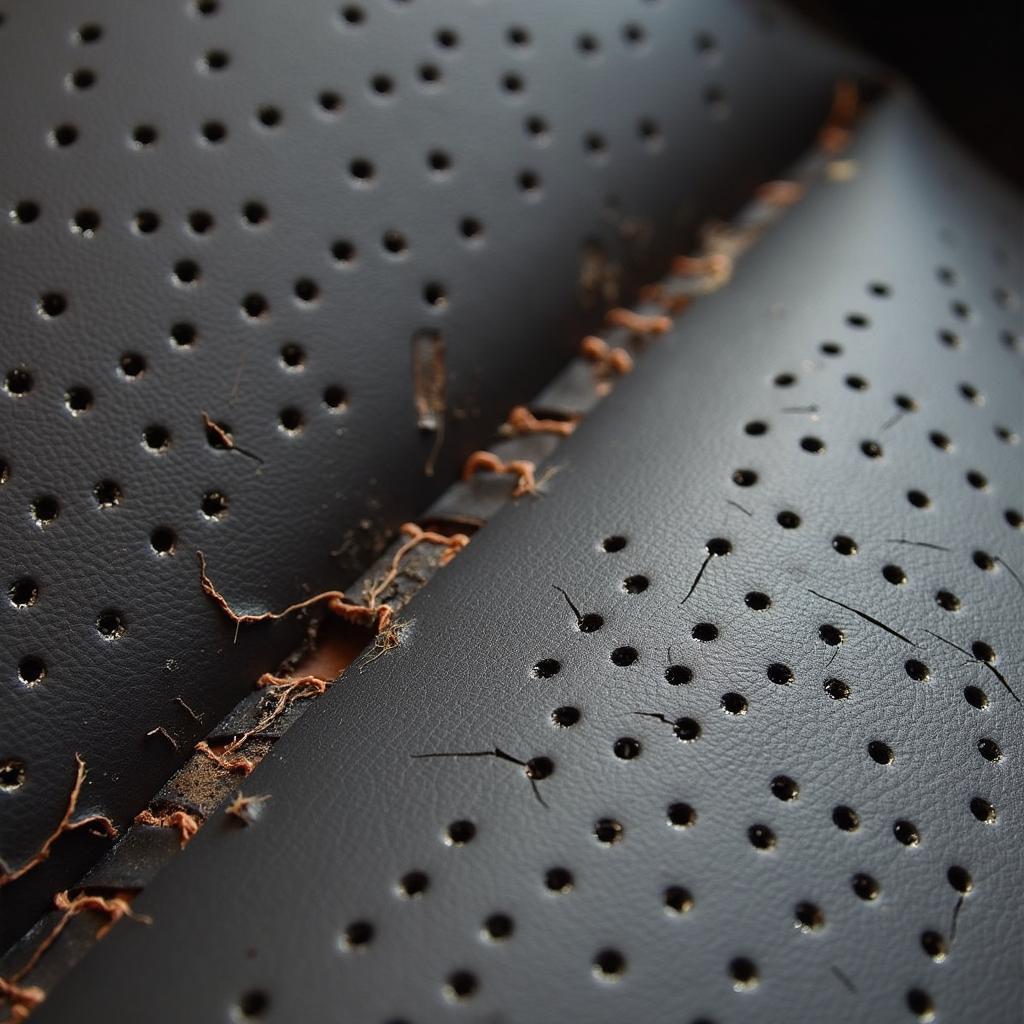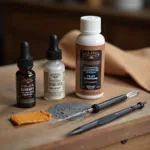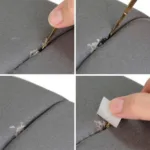Perforated leather car seats offer a luxurious look and added comfort, especially with features like ventilation. But these tiny holes can also become susceptible to tears, cracks, and damage. This guide provides DIY solutions for repairing your perforated leather car seats and restoring their pristine condition.
Understanding Perforated Leather and Common Damages
Before diving into the repair process, it’s crucial to understand the material you’re working with. Perforated leather car seats feature small holes throughout the surface to enhance breathability and comfort. However, these perforations make the leather more prone to tearing, especially with regular wear and tear.
Here are some common issues you might encounter:
- Tears along the perforations: These are often caused by sharp objects or excessive force applied to the seat.
- Cracks around the holes: Exposure to heat, sunlight, and lack of conditioning can dry out the leather, leading to cracks.
- Snags and abrasions: Catching on jewelry or rough clothing can cause minor snags or abrasions on the perforated surface.
DIY Repair Solutions for Perforated Leather Car Seats
Fortunately, repairing minor damage on perforated leather car seats can be tackled with the right tools and approach. Here’s a step-by-step guide to address those common issues:
Repairing Tears along the Perforations
- Clean the area: Use a gentle leather cleaner and a microfiber cloth to clean the damaged area and remove any dirt or debris.
- Apply leather filler: Carefully apply a leather filler product designed for perforated leather into the tear. Use a palette knife or a toothpick to work the filler into the perforations, ensuring a smooth and even surface.
- Let it dry: Allow the leather filler to dry completely as per the product instructions.
- Sand and blend: Once dry, gently sand the area with fine-grit sandpaper to blend the filler seamlessly with the surrounding leather.
- Apply leather dye (if needed): If the color difference is noticeable, apply a matching leather dye to the repaired area using a sponge or cotton swab.
- Condition the leather: Finish by applying a high-quality leather conditioner to restore the leather’s suppleness and protect it from future damage.
Addressing Cracks Around the Holes
- Clean the affected area: Thoroughly clean the cracked area with a leather cleaner to remove dirt and oils.
- Apply leather filler: Use a flexible leather filler to fill in the cracks around the perforations. Work it in gently with a palette knife or your fingers.
- Allow to dry: Let the filler dry completely before proceeding.
- Sand and blend: Use fine-grit sandpaper to smooth out the filler and create a seamless transition with the surrounding leather.
- Apply leather dye (optional): If necessary, apply a matching leather dye to the repaired area for a uniform look.
- Condition the leather: Apply a leather conditioner to the entire seat to restore its moisture and prevent further cracking.
Fixing Snags and Abrasions
- Assess the damage: Determine the severity of the snag or abrasion. Minor snags may only require conditioning, while deeper ones might need a filler.
- Clean the area: Gently clean the affected area with a leather cleaner.
- Use a leather repair kit (if needed): For deeper snags, use a leather repair kit that includes a color-matching compound and a heat tool to seal the repair.
- Condition the leather: After any repair, apply a leather conditioner to nourish the leather and minimize the appearance of the damage.
Professional Repair vs. DIY: When to Seek Expert Help
While DIY repairs can be effective for minor damage, seeking professional help from a reputable car upholstery shop is recommended for:
- Extensive damage: Large tears, deep cuts, or widespread cracks require specialized tools and expertise.
- Airbag deployment: If the damage is due to airbag deployment, it’s crucial to have the seat professionally inspected and repaired to ensure safety.
- Lack of confidence: If you’re unsure about tackling the repair yourself, a professional can ensure a high-quality and long-lasting fix.
Preventing Future Damage to Your Perforated Leather Car Seats
Prevention is key to maintaining the pristine condition of your perforated leather car seats. Here are some tips:
- Regular cleaning and conditioning: Clean your seats regularly with a gentle leather cleaner and apply a high-quality leather conditioner to prevent drying and cracking.
- Use seat covers: Consider using breathable seat covers, especially during hot weather or if you frequently carry passengers.
- Avoid sharp objects: Be cautious of sharp objects like keys, pens, or tools that can puncture or scratch the leather.
- Park in the shade: Prolonged exposure to direct sunlight can fade and damage the leather over time. Park in the shade or use a sunshade to protect your car’s interior.
By following these preventative measures and addressing any damage promptly, you can keep your perforated leather car seats looking their best for years to come. Remember, if you’re unsure about any repair, it’s always best to consult a professional to avoid further damage.
FAQs about Perforated Leather Car Seat Repair
Can I use super glue to repair a tear in my perforated leather car seat?
Using superglue is not recommended as it can harden the leather and make the tear more noticeable. It’s best to use a flexible leather filler specifically designed for automotive upholstery.
How often should I condition my perforated leather car seats?
It’s generally recommended to condition your leather seats every three to six months, depending on the climate and usage. However, if you live in a hot or sunny area, more frequent conditioning may be necessary.
Can I dye my perforated leather car seats a different color?
While it’s technically possible to dye leather car seats, it’s a complex process that requires professional expertise and specialized products. Attempting this at home can lead to uneven coloring and damage to the leather.
Need Further Assistance with Your Car Repairs?
For any other car repair concerns or if you need expert advice, feel free to reach out to us via WhatsApp at +1(641)206-8880 or email us at [email protected]. Our dedicated customer support team is available 24/7 to assist you.
Looking for more helpful guides and tips on car repairs? Check out our article on how to repair fabric car seats.



